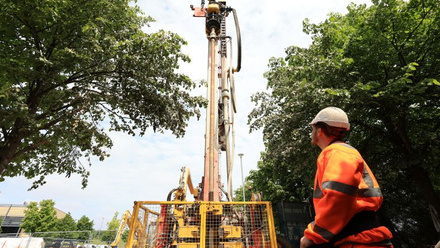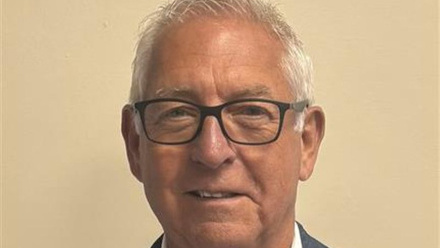A bumpy road for metals and mining
Post London Metal Exchange Week 2023, Wood Mackenzie hosted a briefing on the risks and opportunities for metals and mining amid accelerated energy transition pressures. Alex Brinded reports.

'The current metals super-cycle, which is a major component of the global energy transition, could stall due to a gloomy global macroeconomic environment, geopolitics and a lack of investment in new production facilities,' according to analysts from Wood Mackenzie.
Speaking at a briefing in London, Nick Pickens, Research Director of Global Mining at the firm, highlighted that US$200bln of new mining projects are required by 2030, as well as more efficient and creative methods of recycling existing scrap metals.
'A 7-10-year lead time for new mining projects makes meeting supply/demand requirements difficult,' Pickens said. 'Combined with mid-term uncertainties for demand and metal prices, the situation does create some serious headwinds for the metals super-cycle.'
Pickens identified several hurdles. In light of environmental, social and governance (ESG) policies, emissions and a social licence to operate are both “becoming more difficult as we trend towards a net-zero world.
'We are [also] seeing shifts certainly in the last 12-18 months in attitudes towards supply chains, criticality and resource nationalisation, which are all in effect ‘deglobalising’ a global commodities business, and potentially restricting the supply of these metals that are required for the energy transition.'
He noted how the high metal and mineral prices post-pandemic are starting to come down. There was a lot of expectation in early 2023, Pickens observed, that China would support commodity prices again – a scenario that has not played out, despite the boost in China in renewable power generation capacity supporting demand for metals.
He pointed to high interest rates – particularly in the US and EU – and higher inflation dampening consumer confidence, with spending more on services than physical goods.
He added that the drop in activity in the construction and property sectors is also not helping, as well as the softening in manufacturing – another sector that metals are aligned with.
Can we copper with the infrastructure challenge?
Copper markets will continue to be volatile as end-users clamour for the metal to support increased electrification, suggested Pickens.
The US and EU have significant post-World War II power generation and distribution infrastructure that will need renovating to cope with increasing electricity demand.
'In the next 10-year timeframe, copper consumption, electric vehicles (EVs) and power generation are going to treble, and that accelerates even further as you go towards 2050,' observed Pickens.
'Products such as copper wire rod and electrodeposited foil are used extensively in the manufacture of EVs and renewable energy equipment. This means investment in support infrastructure to underpin copper end-use demand is essential moving forward.'
Wood Mackenzie estimates around 6.7Mt of additional copper demand in their 2050 base case scenario, with the majority in transport – around 2Mt of additional foil capability for batteries is estimated to emerge between 2024 and 2028. The consultancy predicts transport to increase from a 13% share of end-use copper to around 20% over the next decade.
Pickens said they think 700,000t of new copper projects need sanctioning each year to meet this future requirement. Yet currently, the consultancy estimates 2023 to see 200-300,000t sanctioned, with around 6.2Mt of additional supply sanctioned over the next 10 years.
While there is a shift towards secondary supply of scrap, it is “certainly not a silver bullet”, and will require government incentives, Pickens added.
The firm overall forecasts lower prices next year. Production increases of about 6.5% in 2024 are compared to only 3.5-4% growth in demand, so Wood Mackenzie estimates stock will accumulate.
All in for aluminium?
Aluminium meanwhile is seeing 'bleak demand'. A sharp downturn is expected in Europe, driven by high inflation and interest rates, and a slowdown in the construction and manufacturing sectors, reported Aluminium Analyst Ami Shivkar.
Regarding China, she noted that after a very sharp deterioration in demand, the economy is showing some signs of stability. 'The only positive for aluminium is that house completions are actually increasing.'
The automotive industry seems to be faring better than construction globally, Shivkar flagged.
Overall, Wood MacKenzie forecasts an accumulated global surplus of 1.1Mt of aluminium for the next two years. and an increased demand of 3.8%, largely driven by mining in and outside of China.
'Prospects for 2024 will hinge on better economic performance in the major markets and a return to restocking across the aluminium supply chain,' Shivkar said. 'The silver lining is that exchange inventories continue to fall and, all things being equal, should be supportive for prices.'
How to nickel the action
When it came to nickel, Director of Nickel Markets, Sean Mulshaw, explained that the current nickel market is oversupplied, and this would have a negative impact on prices. With a surplus of 1Mt expected by 2025, he expects prices will fall accordingly.
They have seen a 12% increase in global supply this year of finished nickel to 3.5Mt. 'Demand is at 7% growth, pretty healthy growth actually because China has bounced back after last year, but only 3.2Mt of demand, so there is the difference.'
He outlined how a large amount of class 1 – pure nickel – is delivered onto the London Metals Exchange, and class 2 ferronickel or nickel pig iron (NPI) is produced mainly in Indonesia and China and typically made of 20-23% nickel, but might be between 15-25%.
The surplus last year came from a massive ramp up of NPI capacity in Indonesia and in China this year for the battery market.
A dip from COVID-19 resurgence in China continued into 2023, and there has been oversupply. Class 1 prices have fallen – peaking in March 2022 short of US$100,000/t and dropping eventually below US$20,000/t in the last month or so.
'Despite the big surplus, prices have resisted dropping below US$20,000/t until recently,' Mulshaw said. 'This surplus looks set to last for the rest of the decade so producers will need to be ready for this.'
Meanwhile, nickel sulphate has only become of interest since the battery revolution, Mulshaw noted, as a feed material to make battery precursor chemicals and cathode active materials.
For nickel production, he says, 'it is all about China and Indonesia. In terms of demand, it is all about stainless steel and batteries'. Stainless steel is around 65% of global demand, and Wood Mackenzie forecasts this to retain the main portion of the market, although its share will drop as batteries gather pace.
Projecting into the future, Mulshaw anticipates a build-up of nickel sulphate because of Indonesian intermediate producers. The consultancy notes China is converting nickel sulphate back to intermediate products or to produce metal, as various Chinese companies are seeking approval to sell on the LME.
Mulshaw concluded, 'Demand is even stronger next year in percentage terms, but supply will keep ahead of it…Key takeaways can be summed up as too much NPI, too much class 2, too many intermediates making too much sulphate, which is going to make class 1.'
Charging ahead
'For battery materials, it has been really quite positive this year,' said Suzanne Shaw, Head of Energy Transition & Battery Raw Materials at Wood Mackenzie. They are starting to see some investments in battery raw materials and greater understanding of the industry.
They are forecasting slightly slower growth for EVs than predicted in 2022, but still see huge opportunities.
Shaw showed how the battery demand exceeds the total demand growth for each raw material, widening until 2035 – and so battery demand is really underpinning these markets.
'For lithium, by 2035, up to 90% of the market growth will be batteries...Whoever controls these markets then holds the keys to all of our future technological developments. Of course, traditionally that role has been with China.' Shaw highlighted that China dominates refining in each of the battery raw materials – it only doesn’t have a majority in nickel but still refines 46% of global supply.
She noted, in turn, concerns about security of supply, China’s dominance and the way it controls price. Yet there is the US Inflation Reduction Act (IRA) and the Critical Raw Materials Act in Europe. Wood MacKenzie notes some Chinese cathode makers are already moving to other places, such as Morocco, to get under the radar of the IRA. Moving supply outside of China, however, has large barriers that many often underestimate, she said.
Large deficits in supply are forecasted up to 2035, with key investments missing. ESG is an increasing issue also, such as water usage for lithium, conflict issues for cobalt and acid use for graphite.
Brace yourselves
In all, bulk commodity price weakness will contribute to a fall in mining companies’ profits in 2024 according to Wood Mackenzie forecasts. James Whiteside, Head of Corporate Metals & Mining, suggested that new investment will suffer as companies prioritise debt reduction.
'A preponderant concentration on meeting shareholder pay-out expectations takes precedence, while endeavours associated with growth and decarbonisation take a backseat,' Whiteside said. 'Most companies are committing less than 10% of capex to decarbonisation and renewables, and even less on exploration and evaluation.'
He talked about how total free cashflows will return to pre-pandemic levels in 2025, driven by bulk commodity prices.
He added that a modest silver lining amid this scenario is the notable headway observed in the transition towards renewable power generation by mining companies through investment in self-generation or Power Purchase Agreements (see p24 for an article on mining companies embracing renewable energy in Latin America).
But 'in the era of lower cashflows, decarbonisation will take a back seat to controlling debts and maintaining dividends'.







